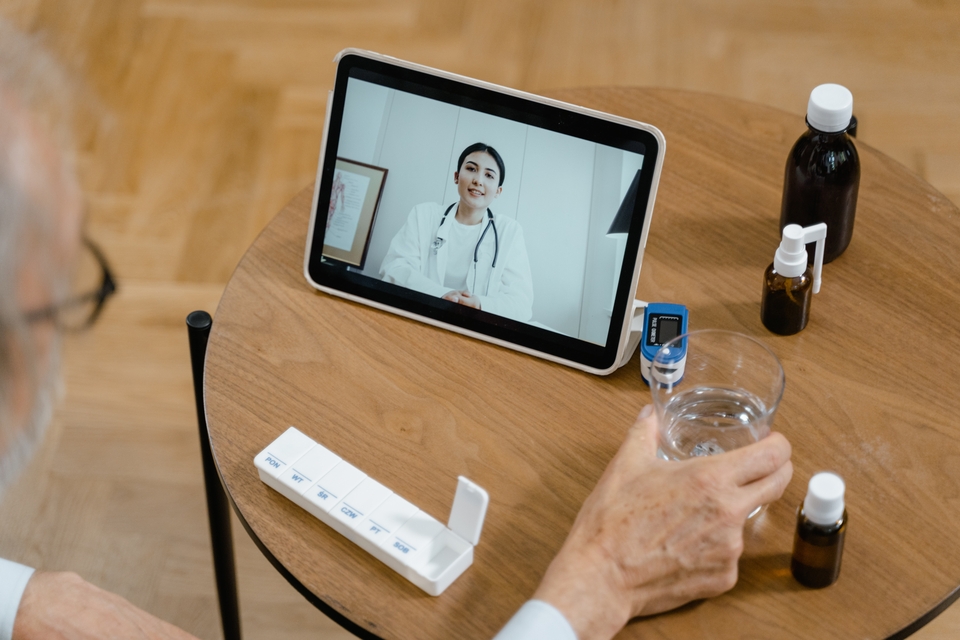Telehealth benefits is the delivery of healthcare and health information services remotely using digital communication technologies like smartphones apps and computers. Telemedicine allows hospitals to deliver services cost-effectively without compromising the quality of care.
Telehealth also allows patients to communicate with their doctors more regularly and easily. Patients can ask questions about their health and get answers from professionals, empowering them to manage their own care. Since telehealth enables remote health appointments and automation of administrative tasks and other manual processes, non-clinical staff can dedicate more time to patient-related activities.
Under the umbrella of telehealth, there is patient consultation, e-health patient monitoring, medical education, and other medical services. These services can be transmitted via wireless health applications, image medical report transmission, and video conferencing.
Telehealth gives health organizations an opportunity for expansion because they can reach a wider audience easily. According to Let’s Talk Interactive, a software company providing telemedicine advantages solutions for healthcare providers and organizations, “Telehealth video conferencing provides a roadmap for growth without the constraint of a geographical location.’’
Telehealth benefits grew popular during the COVID-19 pandemic. Since then, hospitals around the world have been adopting newer telehealth services to reduce the risks of exposure to the deadly virus through in-person visits.
The adoption of telehealth services is also driven by the availability of faster internet connections, smartphones, and changes in insurance standards. As a result, employers, patients, and healthcare providers have significantly cut down on expenses.
Healthcare Providers

Telehealth significantly reduces costs for the healthcare system by enabling outpatient observation. Through remote monitoring technologies, healthcare providers can assess their patients on an ambulatory basis (for outpatients).
Also, hospitals can provide higher quality care at lower costs because highly trained medical professionals can work as a pooled resource. This is particularly significant for low-volume providers. Smaller facilities may not have a sufficient volume of patients to keep a radiologist or pathologist fully occupied. But with telehealth, there can be fractional employment that enables hospitals to have around-the-clock coverage by highly trained professionals at a lower cost.
Additionally, benefits of telemedicine allows hospitals to save time and money that would have been spent on transporting their healthcare providers. Large hospitals that used to have their personnel travel long distances to treat patients in distant locations can save on commuting costs. Therefore, they can spend less on staffing since there will be more available hands to attend to patients.
Patients

Telehealth offers long and short-term cost benefits to patients. Remote monitoring reduces travel costs for patients. Since people can get quality care from their homes anytime, they can quickly contact their healthcare provider whenever they experience symptoms. That way, health issues can be tackled in their early stages.
Reducing the need for patients to travel for surgeries to handle major health problems. Additionally, patients who run their own companies will save money that would otherwise be spent on inpatient care and have more time to dedicate to their businesses. This could translate to higher profitability.
Telehealth also allows patients access to specialist care at a lower cost. For instance, telehealth allows radiologists to operate without geographic restrictions. So, hospitals can securely transfer medical images like CT scans and MRIs to other hospitals. Patients in rural locations can be remotely examined by specialists from any part of the country or the world without paying higher amounts for in-person consultations.
Employers

Telehealth saves time and money for employers by enabling them to reduce missed work time due to health issues. This is because telehealth allows employees to access quality health services remotely instead of going to the emergency room or seeing a doctor for non-emergencies.
Even if an employee is admitted to a hospital, telehealth can help reduce the number of readmissions that could take place within a short period. The patient can be given education and equipment after being discharged to monitor their own health.
By performing assessments like blood pressure, oxygen level, and heart rate checks. Automatic reminders can help them upload the results from their equipment onto a system. That way, health professionals can monitor the results and contact the patient if there is any possible cause for concern.
Employers providing healthcare coverage for their workers can also benefit from telehealth. Despite the high healthcare premiums, most health insurance plans are much lower with in-person visits than with telehealth services.
Employers also save on employee premiums overtime because telehealth brings about compliance with preventive and routine care. Reducing the need to spend much more on managing chronic illnesses.
Image By Pexels.com




